Leveraging AI in Preconstruction: A Guide for Estimators to Achieve Comprehensive Bid Coverage
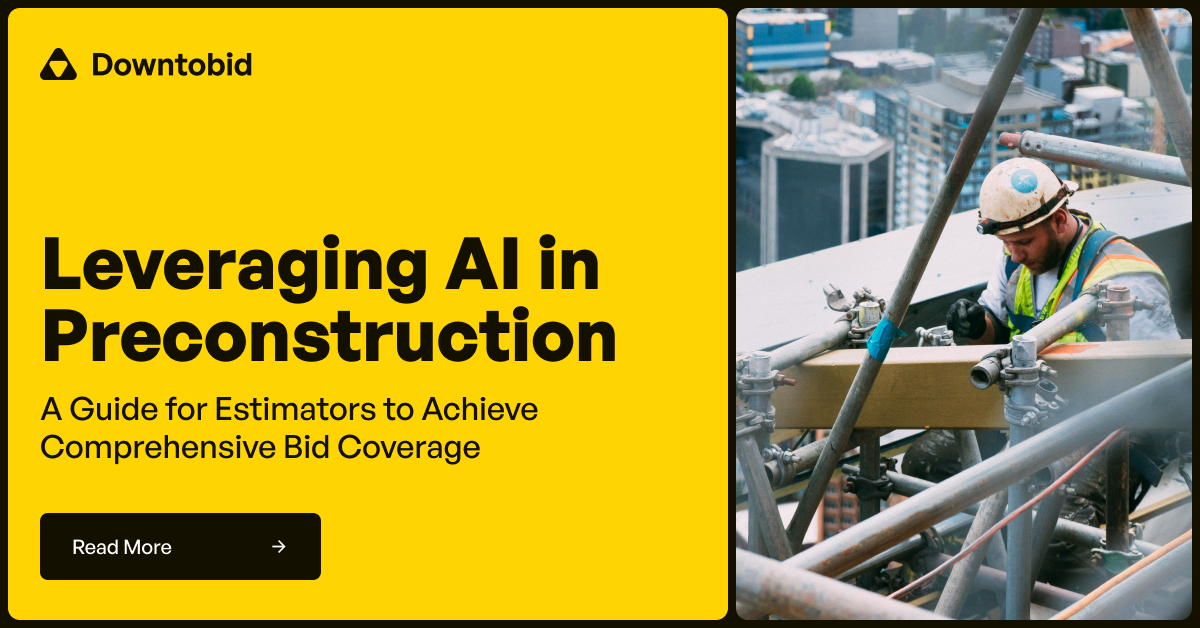
Complete scope coverage and obtaining the ideal number of subcontractor bids are two crucial milestones to achieve during the construction bidding phase.
Unfortunately, identifying all the required scopes, especially in complex bids, is incredibly time-consuming. Estimators are also racing against the clock to get these plans in front of subcontractors, increasing the likelihood of mistakes. This leads to potential disputes around change order, forcing detailed logs as a way to cover your ass. However, with AI, we can start to address these core issues upfront.
While AI is still in its infancy and technologies like automated take-offs are still very far away. AI’s best use case is in understanding construction scope. We believe AI can best help preconstruction teams, estimators, project managers, junior estimators, read and understand plans much quicker.
Let's take a few minutes to address this and explore how AI can be applied to preconstruction teams.
The Limitations of Current Bid Management tools
The world is changing fast and embracing cutting-edge AI. Robots can carry conversations. Humans are inserting AI chips into their brains (yes, weird.) Yet…in construction, bid management tools struggle with even basic tasks, like distinguishing between a residential and commercial plumber.
Instead of assessing scope and subcontractor fit, they still resort to generic mass spam emails for invitations, forcing subcontractors to manually review and respond with simplistic "Yes/No/Maybe" buttons, rather than responding with nuanced bidding intent, clarifications, and their capabilities.
In speaking with over 100 GCs while building Downtobid over the past year, we hear these recurring themes over and over.
Poor Quality Drawings
With an overall trend of declining quality in construction drawings, managing bids is becoming increasingly difficult. Contradictions are rampant, and plans are often incomplete, requiring multiple rounds of revisions, scope cancellations, and lack of specifications even at "100% CDs."
Tight Deadlines Increase Risk of Missed Scope
Tight deadlines only exacerbate the problem. It's not uncommon to face turnaround times of just 2-3 weeks upon receiving bid documents. This intense pressure on preconstruction teams and estimators to quickly get bids in front of subcontractors leaves little room for error. Layered with ongoing cold calls, it's easy to misclassify or overlook small, yet critical scopes like 'concrete finishing.'
Despite pouring in tremendous effort, these oversights can cost you the bid.
Increasingly Busy Subcontractor Landscape
Compounding the issue, commercial subcontractors are becoming busier than ever. With the advent of bid invitation tools, soliciting subcontractors has degenerated into an "invite all" approach. They're inundated with invitations, and yours looks identical to everyone else's.
Low Subcontractor Engagement
As mentioned, subcontractors are becoming increasingly busy. To maximize their participation, it's crucial to make the bidding process as seamless as possible for them. This means: 1) inviting them only to projects well-suited to their expertise, 2) ensuring accurate scope alignment, and 3) providing easy-to-access project plans and documents.
Not only does the current process waste subcontractors' time bidding on mismatched work, but it also strains these vital partnerships.
A Change Is Needed
Clearly, the traditional bid management process has several inefficiencies that are silently shifting the estimator's role away from understanding construction to administrative work.
However, the introduction of AI finally offers a solution to these long-standing challenges. We believe there are two big themes in preconstruction in the short term: 1) Achieve 100% Scope coverage; and 2) Increase your subcontractor participation and bid coverage.
How AI Can Help Achieve Comprehensive Scope Coverage
One tedious, error-prone aspect of bid management is the initial page turn - identifying all required trades from complex drawings. While spec books can provide a shortcut, subcontractors typically bid based on the drawings themselves. Downtobid’s initial goal is to leverage AI to help estimators uncover all trades identified in construction plans, and then eventually expose inconsistencies and contradictions within the plans.
The difficulty and time-consuming nature of this process is prohibitive, especially for complex projects. If you're bidding a straightforward tenant improvement project for, say, a Chuck E. Cheese's, you may not struggle. However, for larger, more intricate projects, manually going through each sheet is excessively laborious.
AI can streamline the process and support estimators by:
- Indexing and analyzing every plan sheet
- Identifying key construction callouts, notes, schedules, and linking to the exact pages they are found on
- Organizing this information into concise scope summaries for efficient estimator review"
That all sounds great in theory, but how does it actually work? And what tools actually support this? And how do I get AI to do this for me?
Good questions. Let’s go through a real world example using Downtobid, the AI tool we’ve built to read construction plans.
Using Downtobid on a Real Example
Take this use case of AI for construction plans. We took a new Discount Tire project, which was processed using Downtobid's AI:
You can click this link to follow along
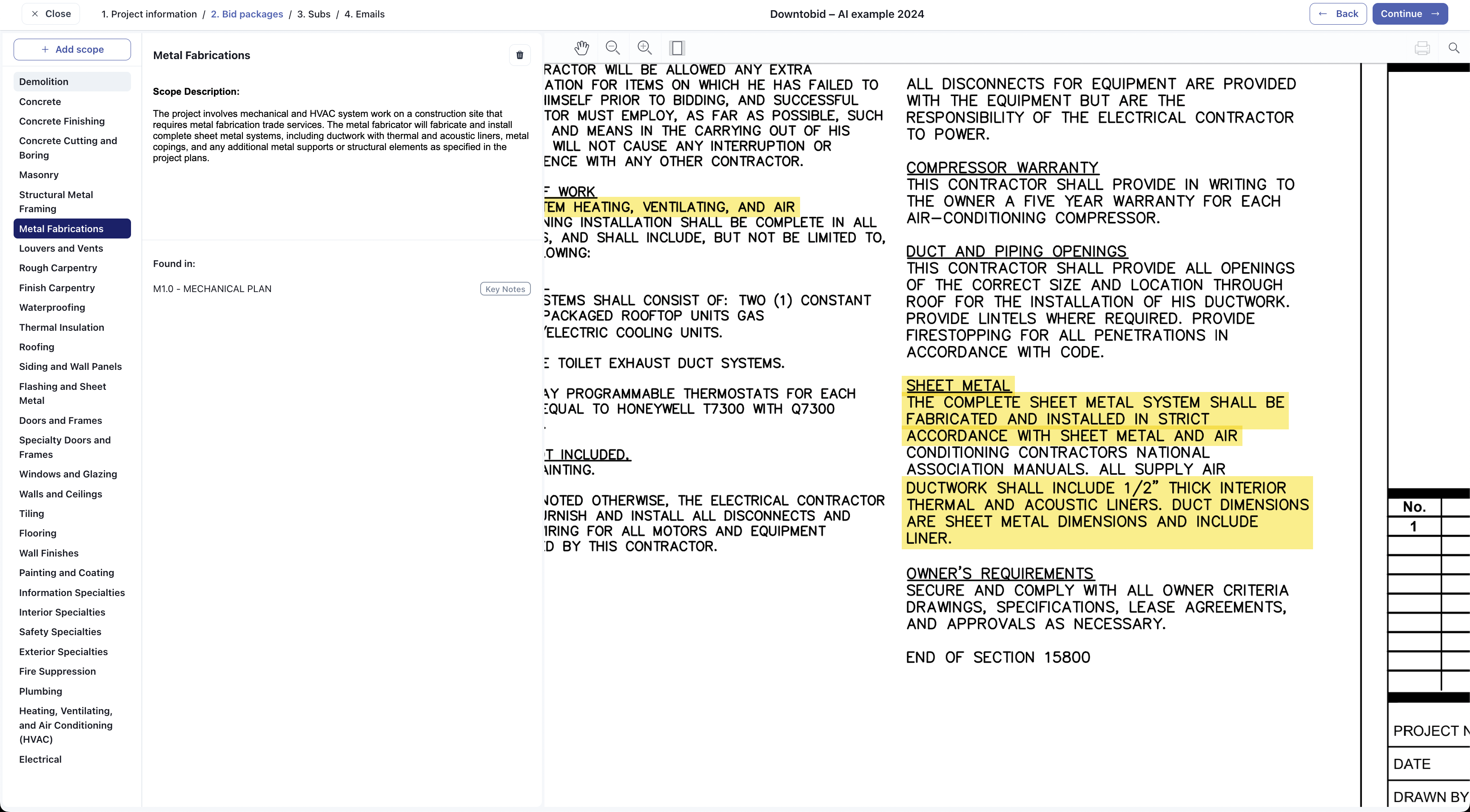
The AI took ~6 minutes to fully ingest the 40+ sheet plan set, including:
- Automatically identifying 31 potential scopes
- Providing outline scope summaries for each
- Providing several pieces of evidence on the drawings itself
While 31 identified scopes seems excessive for this project (and truthfully, there will be false positive cases), it provides a helpful starting point for further analysis. Let's examine a few examples.
Interpreting AI Scope Identification
In this first example, I pulled up Metal Fabrications and it looks like there’s a highlight for sheet metal on the Mechanical Plans.
From this note, we can infer the following potential scopes or sub-scopes:
-
Sheet Metal - The note states "THE COMPLETE SHEET METAL SYSTEM SHALL BE FABRICATED AND INSTALLED..."
-
Ductwork - It explicitly calls out supply air "DUCTWORK SHALL INCLUDE 1/2" THICK INTERIOR THERMAL AND ACOUSTIC LINERS" as part of the scope.
Overall, this seems pretty light in scope and generic, so let me quickly navigate to the HVAC scope and see if it’s more detailed.
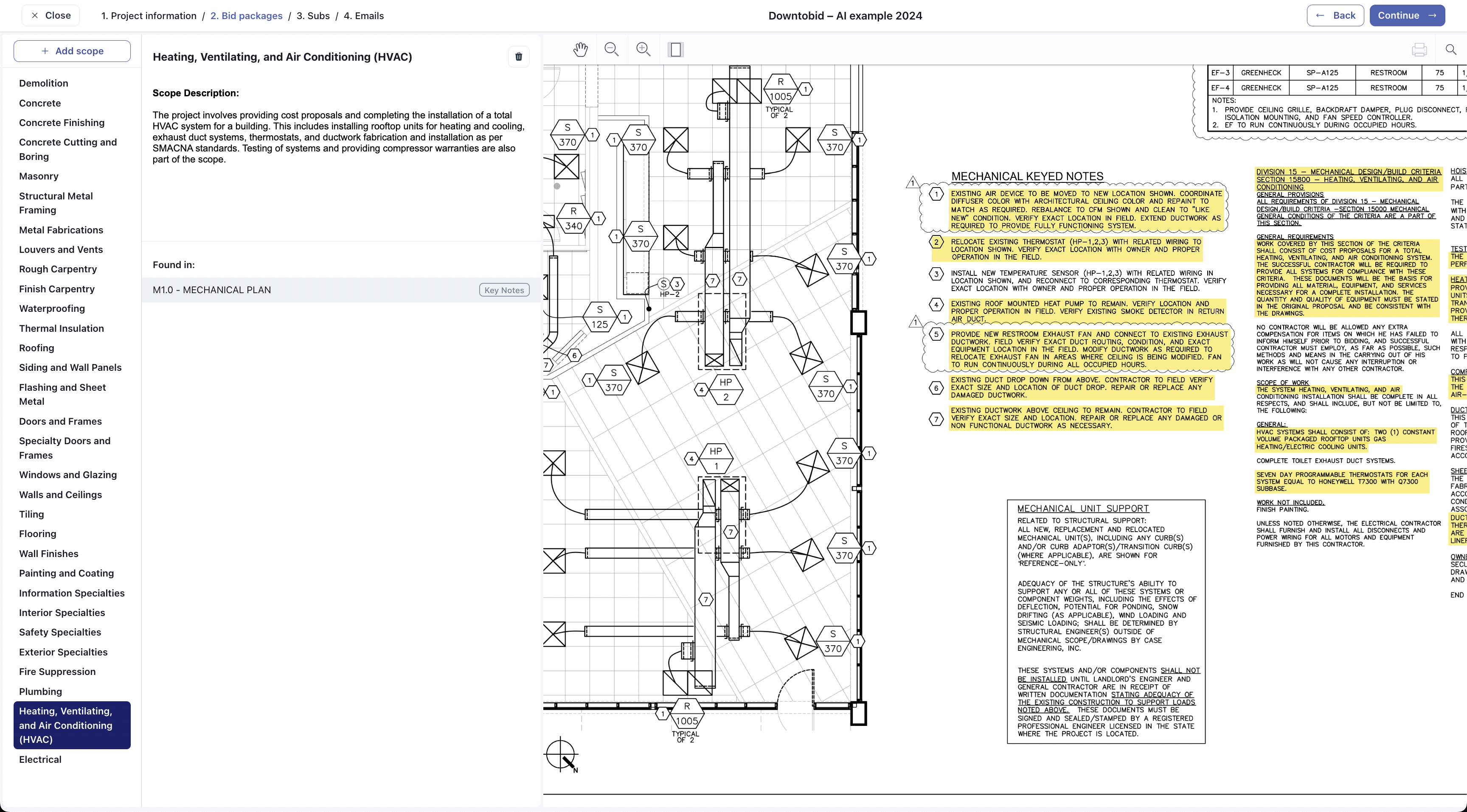
And yep, it’s sending me to the Mechanical plans with a lot more highlights. From a cursory glance, I can tell that:
- The header mentions "MECHANICAL KEYED NOTES", where mechanical typically refers to HVAC systems.
- There are notes about relocating/verifying existing air devices, thermostats, ductwork, heat pumps, smoke detectors (tied to HVAC systems).
- It mentions requirements like "HEATING AND AIR CONDITIONING EQUIPMENT" and "HVAC SYSTEMS SHALL CONSIST OF TWO (1) CONSTANT VOLUME PACKAGED ROOF TOP UNITS GAS HEATING/ELECTRIC COOLING UNITS."
- There is a note about the "COMPLETE TOILET EXHAUST DUCT SYSTEMS", which falls under HVAC ventilation.
Not bad for a junior estimator like myself! However, for this next one, let’s look through a more ambiguous example.
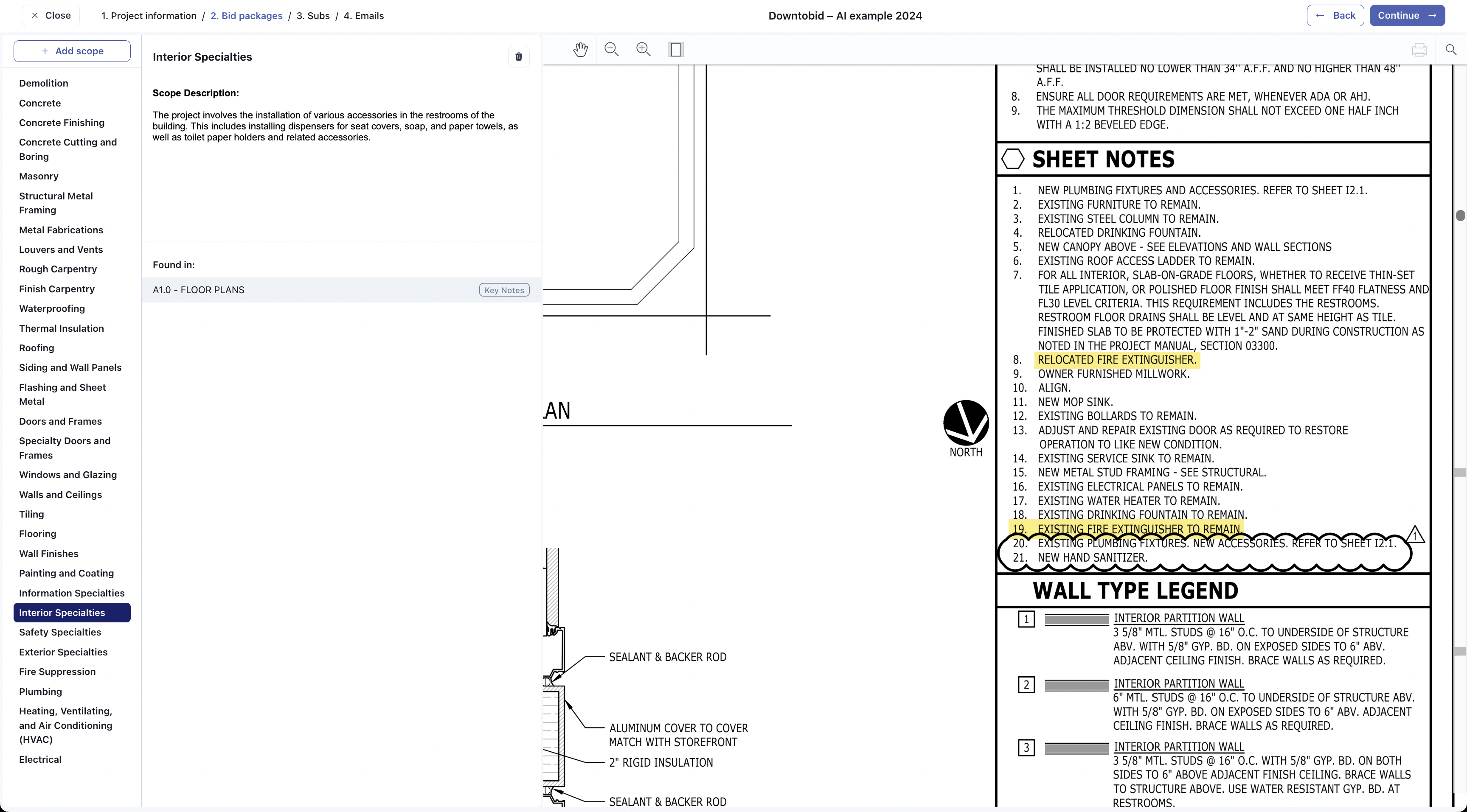
This time, I flipped through ‘Interior Specialties’ scope.The only two highlights are “RELOCATED FIRE EXTINGUISHER” and note #19 states "EXISTING FIRE EXTINGUISHER TO REMAIN.” Judging from these, it seems more of a detail for the Mechanical Contractor to consider rather than explicitly calling out to supply and install fire extinguishers.
It's easy to see why the AI flagged these, but as you can see, its current role is primarily for “fact finding” rather than “interpretation.” With enough development, we believe AI can get to a point where it can draft comprehensive scopes of work, identify more instances across plan sets, and potentially even interpret visual construction details on the drawings itself.
If you'd like to try it for yourself, you can try uploading your own plan sets here:
https://downtobid.com/create-project
How AI can Increase Subcontractor Response Rates
While identifying scopes is a crucial first step, effectively engaging subcontractors is another major hurdle. Even with complete scope coverage, winning bids hinges on ensuring bid participation. The circular process of inviting, calling, re-inviting, and re-calling is incredibly time-consuming for estimators.
It's not uncommon to see invitation lists like this in existing tools:
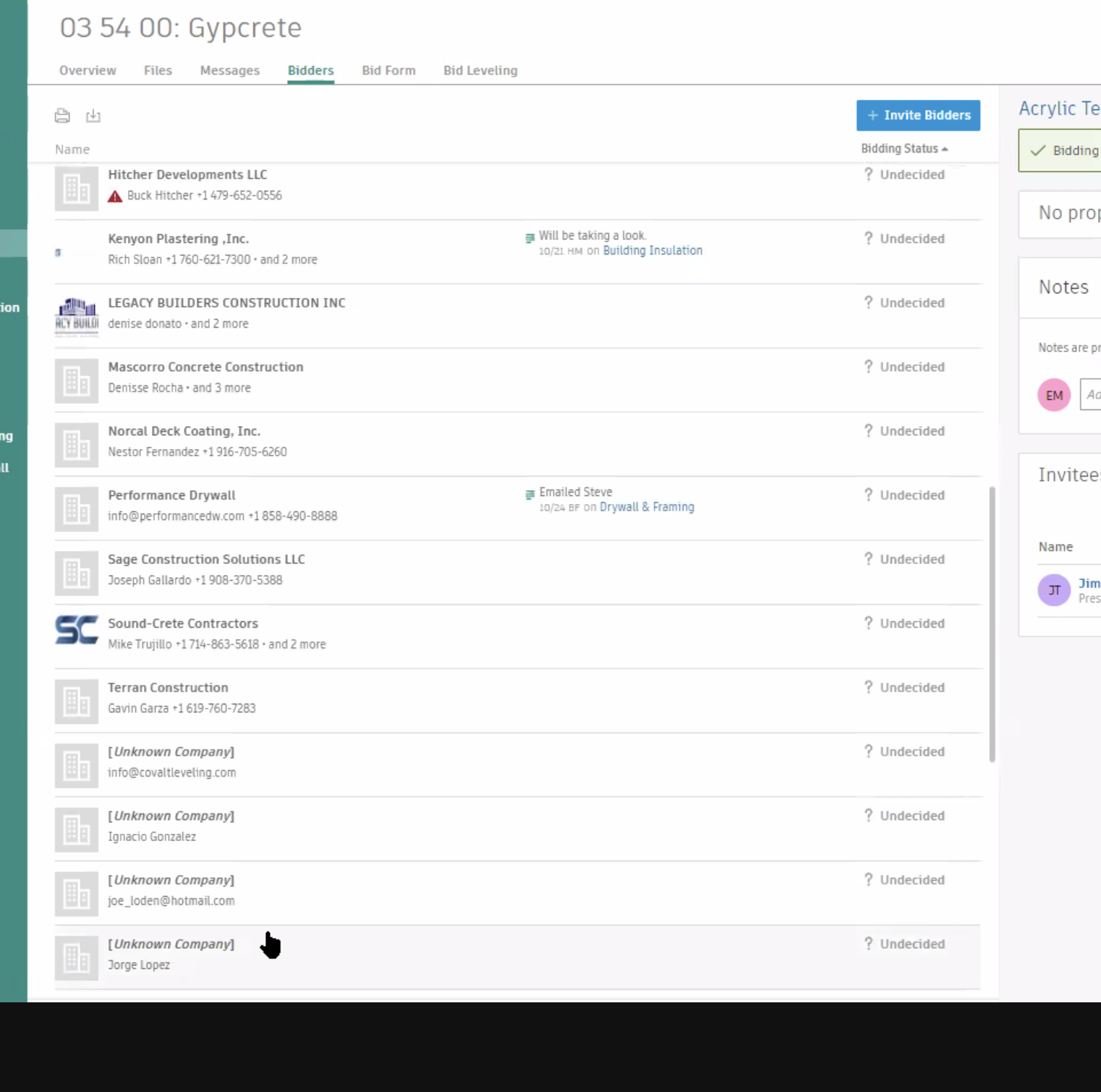
This approach often leads general contractors (GCs) down one of two paths
- "Cast a Wide Net" - Inviting as many subcontractors as possible, resulting in wasted effort and low engagement.
- "Targeted Outreach" - Researching and qualifying subcontractors, a labor-intensive process prone to oversights.
Both strategies are heavily reliant on manual data gathering and endless phone calls for contact information.
While personal outreach will always play a role, leveraging AI to automate significant portions of the bid prep process can dramatically increase upfront subcontractor response rates.
Finding Subcontractors with Relevant Experience
Despite the conventional wisdom of 'casting a wide net,' subcontractor fit and specialization are crucial factors for building bid coverage. It's imperative to match each project's requirements with subcontractors who have relevant experience in that scope and complexity level. This pairing will improve your bid accuracy and foster stronger partnerships
We wrote a more comprehensive guide on Reddit earlier this year and here on how to find commercial subcontractors.
To maximize engagement, the bid solicitation process must prioritize subcontractor needs and create a seamless experience from initial outreach through bid submission. Best practices include:
Attention-Grabbing Subject Lines
No, "Bid Invite: McDonald's" is unlikely to stand out. Leverage details like project size, type, and location to generate some interest to drive your open rates.
More Personalized Bid Invites
Go beyond just including a name. Provide tailored scope summaries, highlight relevant qualifications for why you’re inviting that specific subcontractor.
Modern, Subcontractor-Centric Plan rooms
Make it as easy as possible for your subcontractors to access the plans. Don’t force them to create an account. Don’t provide 15 different planset versions. Don’t include various pre-qualification forms (yet)
Keep everything simple, with a singular focus on helping them understand the scope.
Consistent Follow Ups
Don't inundate subcontractors with reminders. Schedule a cadence of 2-3 follow-ups, properly spaced out based on the bid timeline, to demonstrate respect for their time while maintaining your seriousness about the project.
Manually executing all these best practices is a time-consuming process. Let’s take a look again on how Downtobid’s AI can help GCs streamline and optimize the entire subcontractor outreach process.
How to Solicit Bids using AI
For the Discount Tire project mentioned earlier, Downtobid's AI not only generated a comprehensive list of required bid packages but also:
Curated a tailored list of local, prequalified subcontractors matched by relevant capabilities
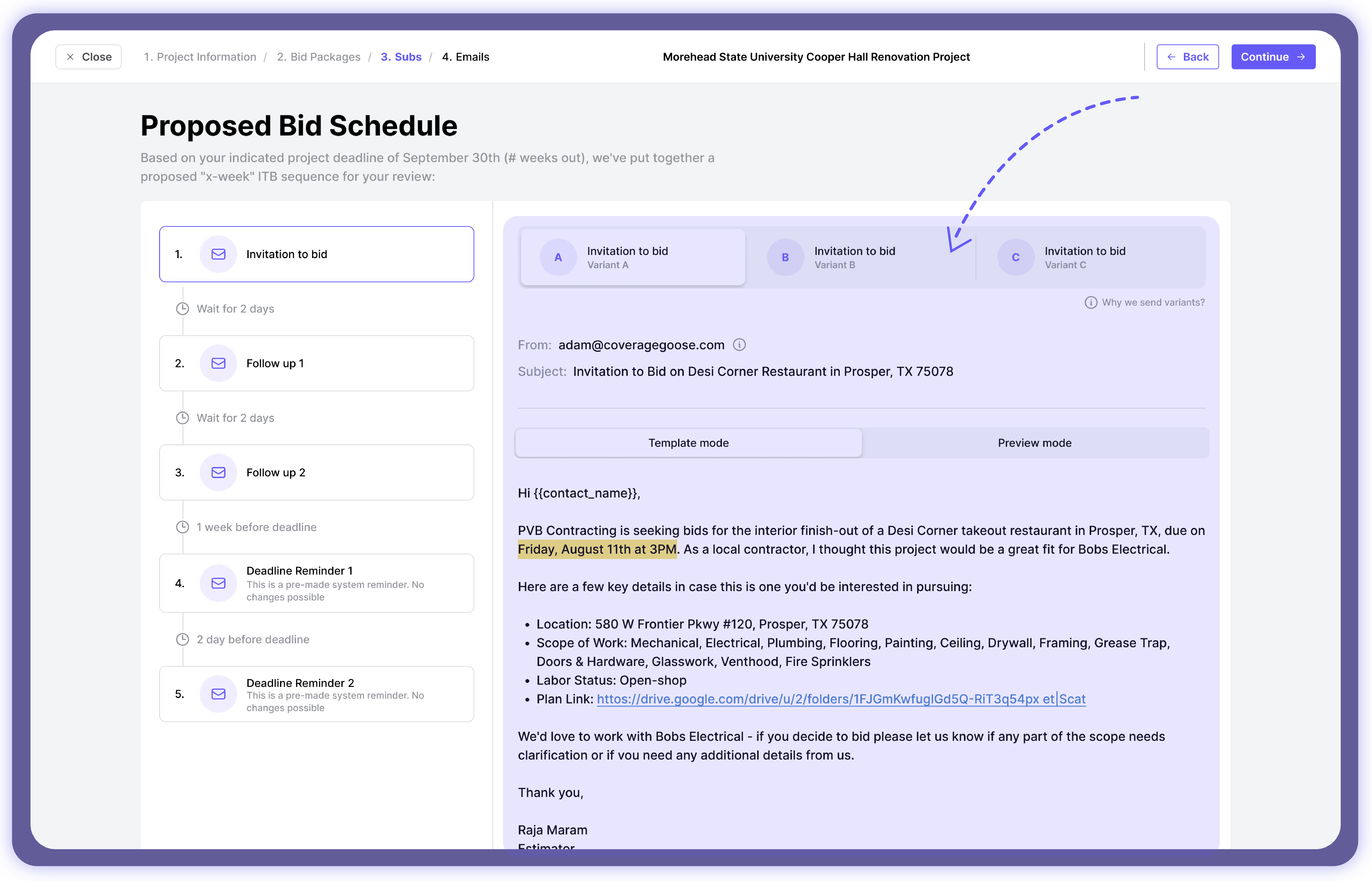
Drafted personalized bid invitations with attention-grabbing subject lines and simple scope summaries.
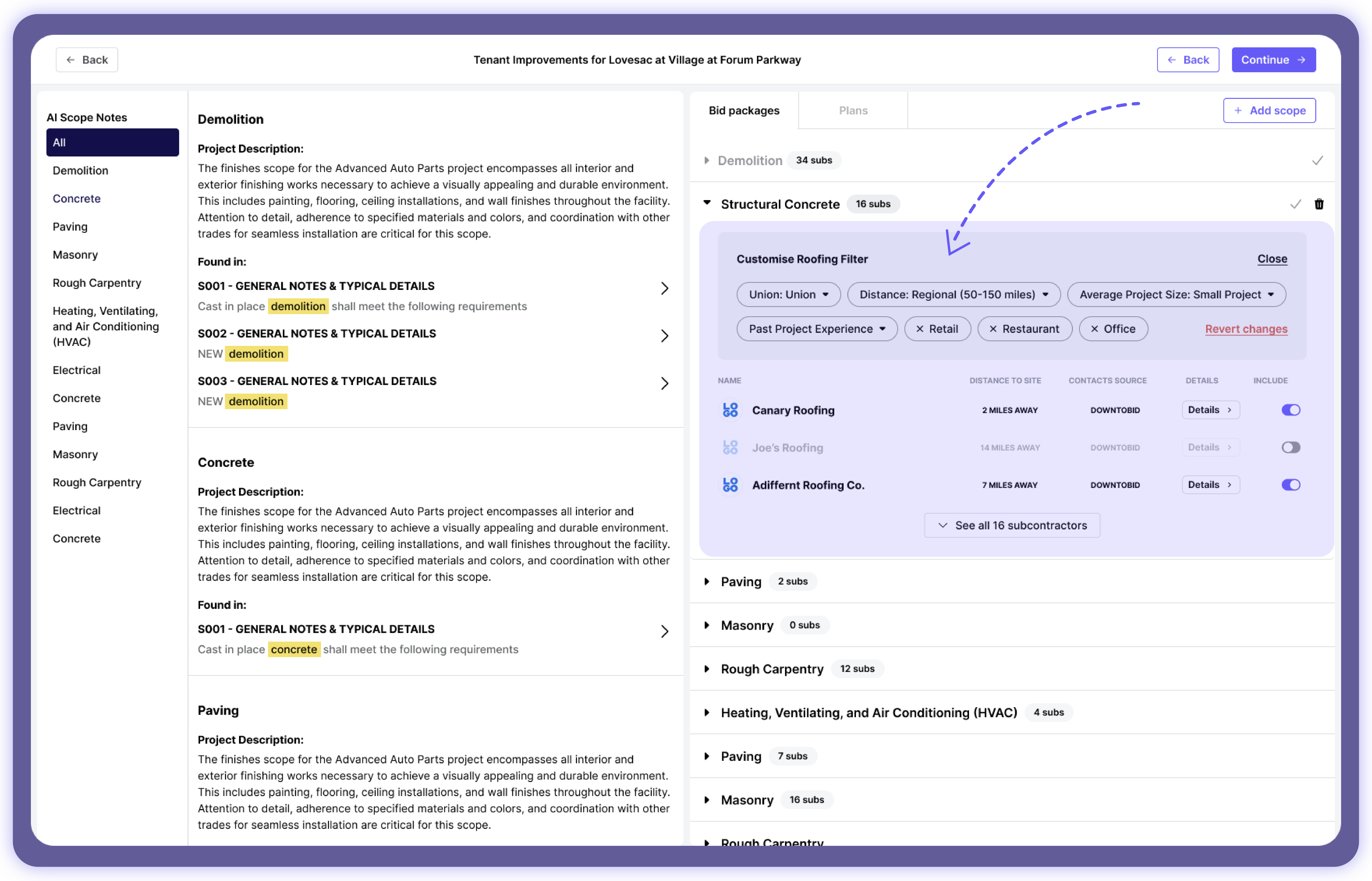
Provided a self-serve, frictionless plan room for document access with no logins required
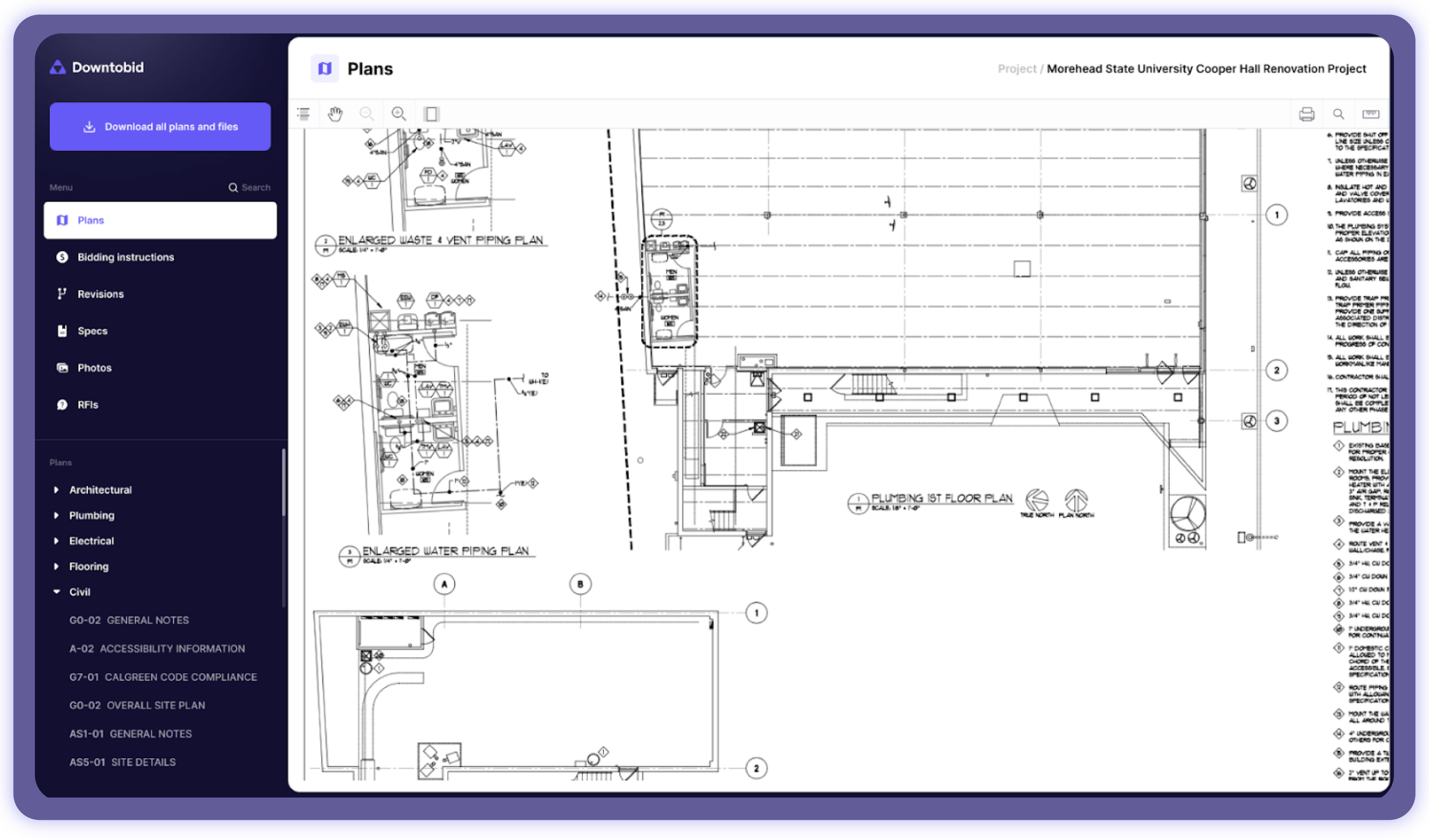
Here are some early results we're seeing with Downtobid customers using these an AI based process (over 60% response rate, over 80 bids generated for a single project).
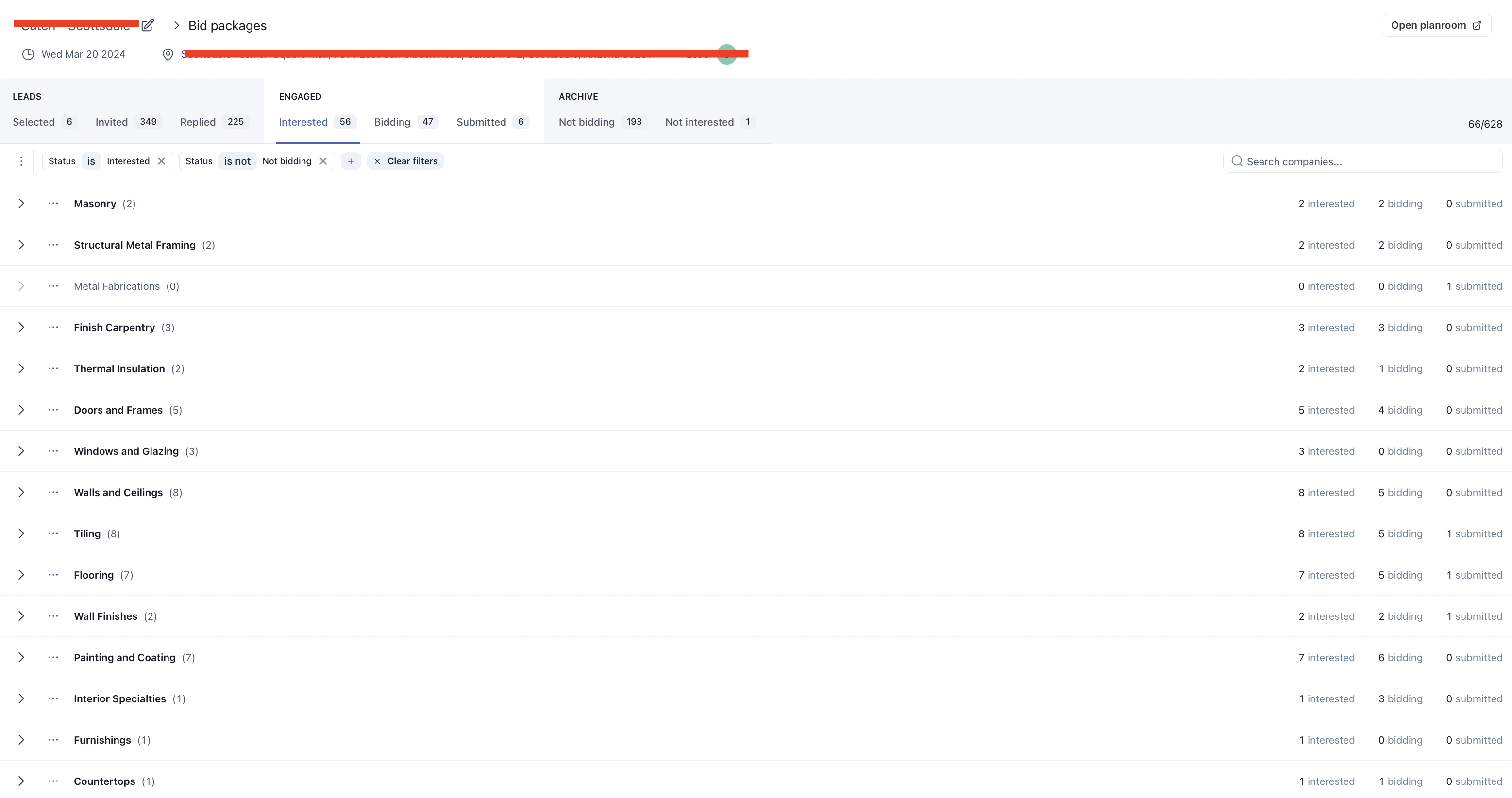
Final Thoughts: Where AI Fails in Construction
While immensely powerful, AI is far from perfect and there are limitations with this technology. For example, AI struggles with crucial details like existing site conditions – especially with nuanced considerations between each set. AI processes everything as literal text, so it’s unable to currently form a structured opinion on construction context.
This means that there’s still a huge need for human guidance. Our position is that AI currently stands to serve as a strong assistant. For all the difficult heavy lifting, estimators will. We hope the introduction of this technology will bring a lot of much needed good into the industry.
If you want to chat about AI strategy with your preconstruction team. Please feel free to contact us directly.
Thanks for reading!